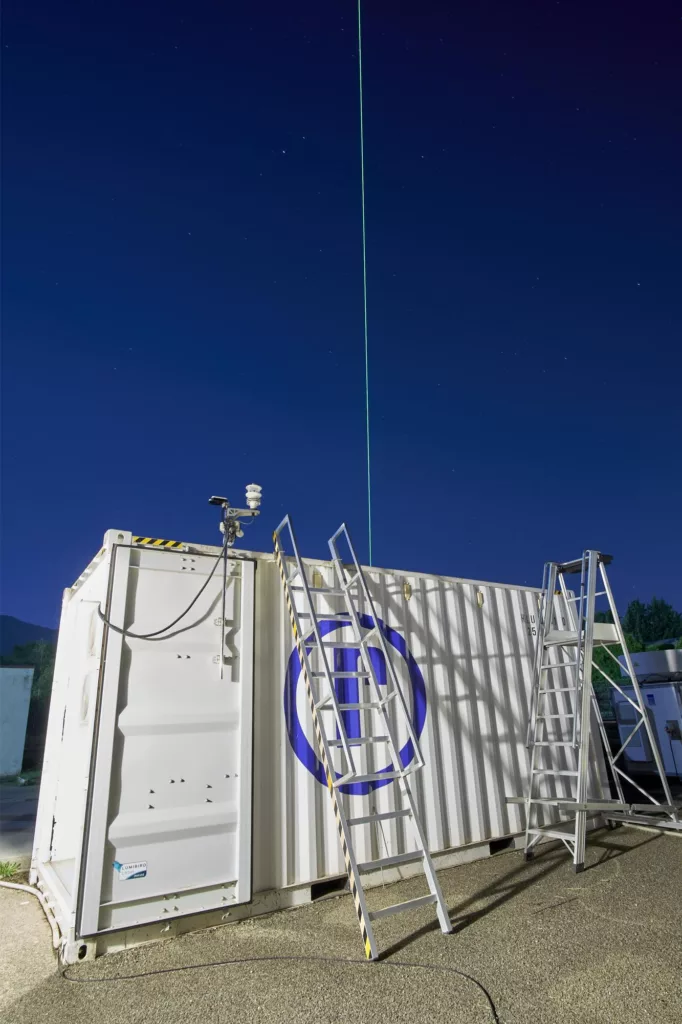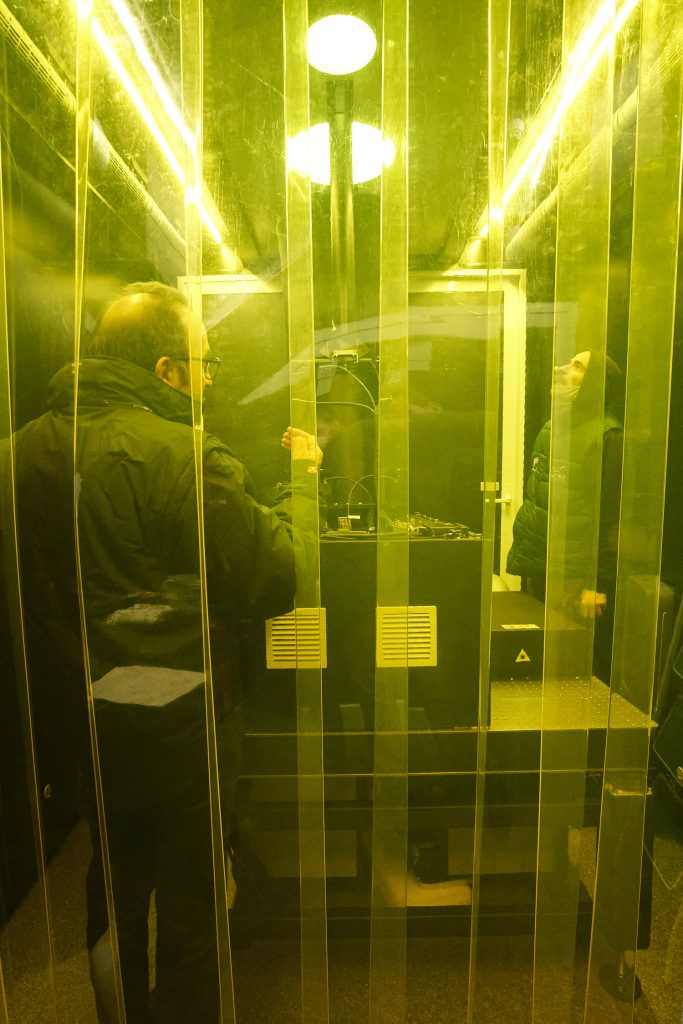Fixed multi-wavelenght Raman lidar
The fixed multi-wavelength Raman lidar system has been designed to provide multi-wavelength elastic (1064, 532 and 355 nm), Raman (607, 407 and 387 nm) and depolarization (1064, 532 and 355 nm) measurements for the retrieval of optical and microphysical properties of the atmospheric particles and water vapour mixing ratio profiles. The system was installed in 2021 and is in the optimization phase.
The system is in biaxial configuration and is based on two Nd:YAG laser sources: one emitting radiation at 532 and 355 nm, with 20Hz repetition rate, the other emitting radiation only at 1064 nm, with 10 Hz repetition rate, to avoid polarization purity loss due to the SHG and THG crystals.
Two Cassegrain telescopes (with diameters of 400mm and 200mm) collect the backscattered radiation from the atmosphere to cover an altitude range from 200m (minimum full overlap altitude) up to at least 30km.
For each telescope, optical channels are available at 1064, 532, 355 nm (parallel and perpendicular polarization components for the three wavelengths), 607, 387, and 407 nm for a total 18 channels.
CCD cameras for UV and IR are mounted for both telescopes to monitor the alignment of laser beams sent into the atmosphere. The polarization calibrators are based on the ± 45° technique.
Detection is performed by means of APDs at 1064 and by photomultipliers for all the other wavelengths. Acquisition is performed in analog mode at 1064 nm and in simultaneous analog and photoncounting modes for the other wavelengths. The vertical resolution of the raw profiles is 3.75m. In the analog mode, the standard deviations of the signals are also acquired up to 10km, for the error calculation. Laser radiation measurements through photodiodes are also acquired in order to monitor the laser energy stability.
The system is fully motorized for laser beams alignment, telecover test, dark current measurements and polarization calibration. Moreover, it is fully automatized, allowing to run measurements and tests in an unmanned and programmed way.
The system is hosted in a 20ft container, with RH and T internal monitoring and setting, and has been designed to operate 24h/7d. It is also equipped with an external meteo station.
The lidar system is part of EARLINET, it is one of the instrument of the Potenza ACTRIS national facility and is also one of the instruments of the ACTRIS Central Facility CARS (Centre for Aerosol Remote Sensing), and provides the systematic lidar measurements scheduled in ACTRIS/EARLINET activities.
Contact person:
Aldo Amodeo



